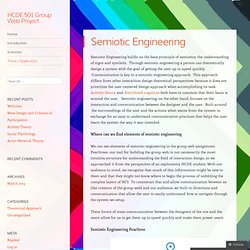

Semiotics. SemiotiX. The 14th International Pragmatics Conference was held in Antwerp (Belgium), July 26-31.

A truly international event which takes place every second year, the 2015 conference attracted 1,277 linguists and semioticians from 62 countries. All the continents were represented, bearing witness to the relevance of the International Pragmatics Association (IPrA) to the numerous scholars who study […] From the International Pragmatics Conference (July 26-31) A specialist of multimodal discourse analysis, the author addresses the issue of context change potential (CCP) from a cognitive semiotic perspective. As Dr. Wildfeuer could not be present at the Antwerp conference, her paper was delivered in this audio-visual form. Plants are organisms that process vital information from their environment and from other plants. Emoji: The Movie. By Vyvyan Evans on July 28 The world’s global means of communication, emoji, has now made the final technology jump.
Welcome the smart book By Paul Bouissac on June 16. Semiotic Engineering Research Group. Prof. Clarisse Sieckenius de Souza. Carla Faria Leitão. Carla Faria Leitão has a PhD in Psychology from PUC-Rio and has been drawn to informatics and HCI by the subjective aspects of computer artifacts exposed by Semiotic Engineering.

With special interest in how qualitative methods can be used outside social and human sciences, she has been leading methodological research in SERG, as a senior researcher, since 2002. Her current research interests involve semiotic accounts of culture in HCI, and topics that contribute to expand and refine Semiotic Engineering Theory and Methods. Carla is the co-author of the book Semiotic Engineering Methods for Scientific Research in Human-Computer Interaction . She has co-supervised Silvia A. Bim’s PhD Dissertation (concluded in 2009) and Luciana Salgado’s PhD Dissertation (concluded in 2011), with Clarisse de Souza. CV Lattes (for Brazilian researchers) Contact: About Semiotic Engineering. The Semiotic Engineering of Human-Computer Interaction. Semiotic engineering. Semiotic Engineering[1][2] was originally proposed by Clarisse Sieckenius de Souza as a semiotic approach to designing user interface languages.

Over the years, with research done at the Department of Informatics of the Pontifical Catholic University of Rio de Janeiro, it evolved into a semiotic theory of human-computer interaction (HCI).[3][4] Semiotic Engineering views HCI as computer-mediated communication between designers and users at interaction time. The system speaks for its designers in various types of conversations specified at design time. These conversations communicate the designers' understanding of who the users are, what they know the users want or need to do, in which preferred ways, and why.
The designers' message to users includes even the interactive language in which users will have to communicate back with the system in order to achieve their specific goals. Approach from Semiotic Engineering. Semiotic Engineering builds on the base principle of semiotics, the understanding of signs and symbols.

Through semiotic engineering a person can theoretically design a system with the goal of getting the user up to speed quickly. Communication is key in a semiotic engineering approach. This approach differs from other interaction design theoretical perspectives because it does not prioritize the user-centered design approach when accomplishing its task. Activity theory and distributed cognition both have in common that their basis is around the user. Semiotic engineering, on the other hand, focuses on the interaction and communication between the designer and the user. Where can we find elements of semiotic engineering We can see elements of semiotic engineering in the group web assignment. These forms of meta-communication between the designers of the site and the users allow for us to get them up to speed quickly and make them power users.
Semiotic Engineering Pearltree Like this: